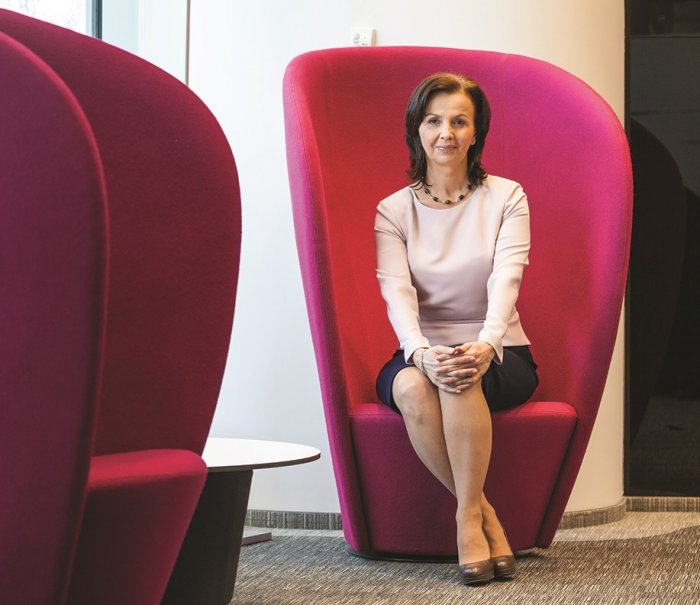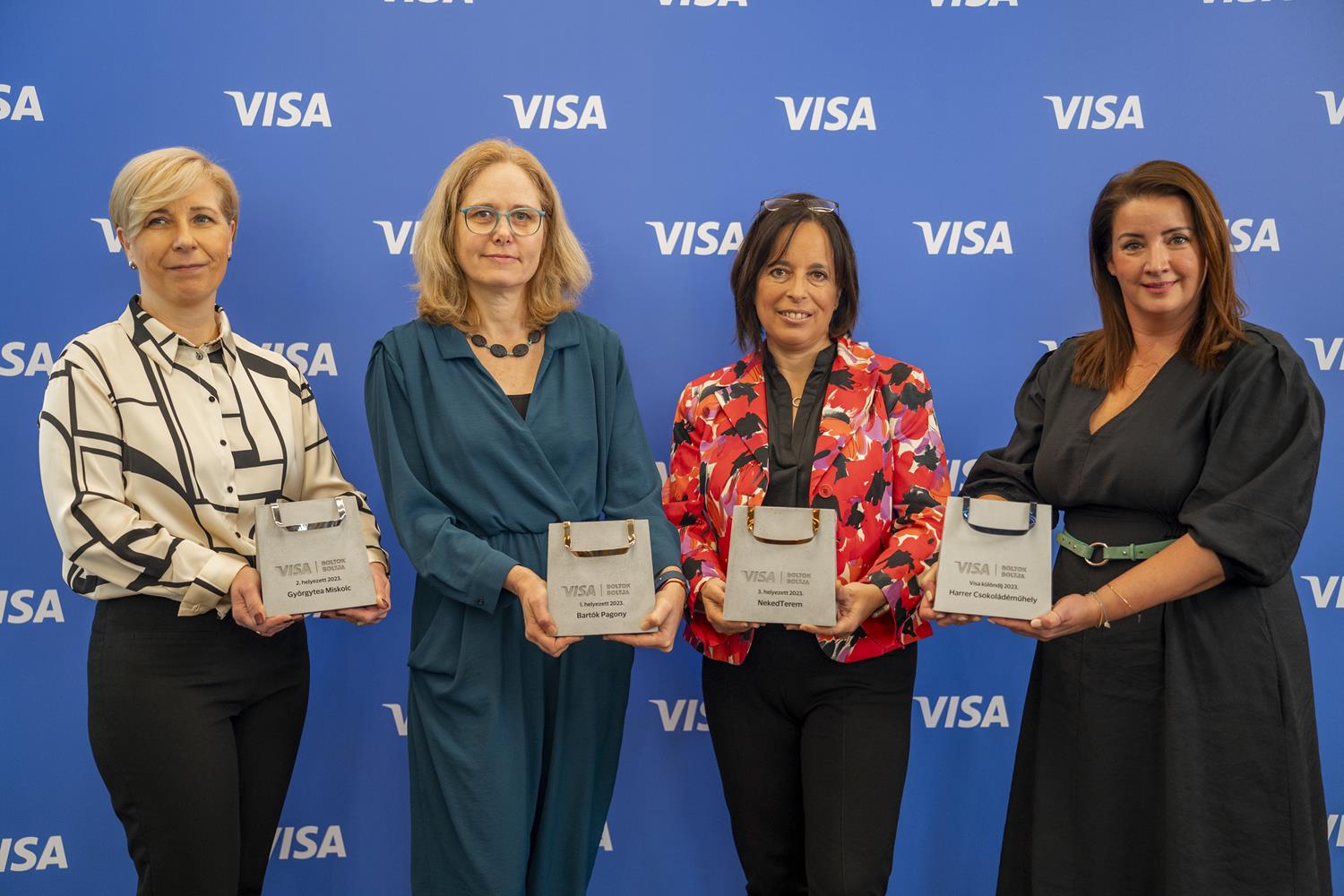CEE economy benefits from women in leadership

The CEO of PwC for Central and Eastern Europe, Olga Grygier-Siddons, spoke to the Budapest Business Journal about the role of women in corporate hierarchies and how being open to change and innovative ways of thinking can help businesses gain a competitive edge.
Olga Grygier-Siddons takes her seat: ‘If women are given the opportunity, and if they want to, there is plenty of scope for them in CEE to be at the top table.’
Women make up one half of the potential corporate leadership, and represent a huge management resource that is going woefully underused, both worldwide and in Hungary. Clearly, firms that have the foresight to tap into this resource can gain a competitive advantage. One company that is taking advantage of the potential of women leaders is PwC, which in 2014 elected a woman to lead its Central and Eastern European regional practice.
Olga Grygier-Siddons is the first woman ever to be elected to the position of CEO for the region. Since then, she’s been instrumental in helping push women into leadership roles within her organization and in trying to decode what holds women back from pursuing such ambitions.
Born in Poland, Grygier-Siddons moved to England in the 1981 where she completed her studies. She joined PwC’s corporate finance department in the early 1990s and eventually returned to Poland with her family to take on the role of advisory leader. She was struck by the dramatic changes in her homeland and has been closely monitoring the evolving hierarchies within the corporate sector in the region. She is driven by a passion for her work and tries to instill that ethic in her colleagues, particularly the women with whom she works.
After having worked in the corporate sector for a number of years what is your perception of gender equality or inequality?
What I’ve seen is that women at the top tend to operate in businesses they started or family business where they grew into that role. When it comes to businesses where positions are appointed, there are much fewer women. In companies where they have formalized the process for the promotion and appointment of senior roles, women do much better.
When you have an all-male boardroom you tend to forget that there are no women there but when you have one woman in that boardroom you do notice very quickly that there’s only one. I’m very conscious in situations where there are only men and I make this clear to my colleagues.
What is the advantage of having women in leadership roles?
PwC has a diversity and inclusion focus. We believe that a diverse work environment produces much better results and that’s the main reason for fostering such an environment. Not only is it good for the business but many of our clients have come to expect it, because they know that it has a positive impact on the value they are getting. But until gender equality in the workplace comes naturally, we need to ensure that there is appropriate support for groups that traditionally have not been supported in our business.
We want more women in leadership roles because it adds value and makes sense for our economies. Right now we are in the transition from cost to value competitiveness and this is exactly what this economy and what our businesses need. They need leaders and managers who have the full range of skills and there are plenty of women out there who can help our business and economies move forward and be more competitive. I’m not speaking from a place of entitlement. I just believe that it makes perfect business sense.

The firm’s first CEO for the region: Olga Grygier-Siddons speaking for PwC.
Given the resistance to change, what are you doing to make this happen?
The career progression from manager to partner is about five years, and from partner to a leadership role, it takes quite some time. Our job is to provide the right environment and to encourage women to have a go. We try to ensure that each role has a really good role specification and that we carry out assessments in a formal way. We also have strict procedures regarding ratings and promotions. This helps us see how many women are suitable for the job.
PwC was also one of the first organizations to join the UN initiative “HeForShe” in which men in senior roles in our region coach women and help them progress with their careers.
Until the process becomes automatic, it’s important to be forced into the habit of monitoring these tendencies.
How can the corporate sector as a whole correct this age-old problem?
When you shine a light on these issues you tend to get better behaviors. For me the first step is disclosure. The more pressure we have, especially on the public sector and listed companies, to disclose their statistics on diversity, the better.
Before we put any hard measures in place, such as quotas, we need to show that these inequalities exists; the same goes for inequality in pay.
What are some of the biggest obstacles you face in the process?
Even when you identify women as top candidates for a particular role, there is a startling difference between female and male candidates. You say to a man that you would like to consider him for a job and his reaction is: “Fantastic! I’m perfect for this role!” You say this to a woman and her reaction is: “I’m not sure, I can’t do that, I have children and family commitments.” It’s the classic reaction. You need to work with women to convince them that they are suitable.
Women have a tendency to want to be perfect and they often compare themselves to perfection and focus on the things that separate them from perfection, whereas men tend to focus on what they have.
Innovation is an important aspect of all business and when you think about it, innovation is really about trial and error. For us women, it’s important that we allow ourselves to fail. It’s fine to fail, so long as you learn from the experience.
But what if someone is simply content with a middle management position or doesn’t want the burden of responsibility of something more?
Much of this is a matter of perception. Middle management is actually the hardest because you have pressures from above and below. Once you push through middle management and the higher up you are, the easier life becomes because you have a lot more help and you have a lot more control. I think many women get put off in middle management because it’s so hard. And that time tends to coincide with the time you’re raising a family.
What advantages do women from CEE have in becoming leaders?
Communism left us with some bad legacies but one of the advantages of communism was that women went to work, and this dramatically increased the number of women in the workforce, which is great. What is not so great is that not enough of these women reach top positions.
Changing times, the different ways of working and the need for EQ skills make women very suitable and valuable in how companies adapt to change. Traditionally women are good at working in a collaborative way, motivating people, listening, understanding needs – all common traits of a successful person. If women are given the opportunity, and if they want to, there is plenty of scope for them in CEE to be at the top table, right through the management ranks.
How has the role of women in leadership positions evolved in the region?
It’s more or less 50/50 up to middle management but that drops substantially when you get to the partner level, not just in Hungary but also in Poland, and even dips below 10% in some CEE countries. But we’re working on changing those numbers. PwC represents what you would traditionally see in a boardroom in CEE: Women are represented in the low 20 percentile, and very rarely do you see women CEOs.
In listed companies the percentages are even lower. In privately owned, unlisted businesses there are usually more women at the top.
In addition to leveling out the playing field how can companies in CEE stay competitive in face of more developed Western nations?
When countries in the region first embarked on the road to a market economy, whilst it was a very painful transition, we had some advantages. We were very attractive to foreign investors because we had a market with huge potential and consumers who wanted to consume western goods…. But very quickly we looked at what was on offer and thought we can do it just as well if not better, at a much better price. And we started developing our own economy. The focus was on leveraging the cost advantage and I think that got Central and Eastern European countries through the early stages.
But now, our economies have the added challenge of continuing to be price competitive but also providing more value for money. We can no longer compete with Asia and Latin America. But it is this challenge that is changing the way companies are run. Typically, companies used to be run in a very hierarchical way but when you need to innovate and come up with new products and services or change your business model because of technology, you have to change very quickly. So we are seeing increasingly that businesses are becoming flatter structurally, looking for a more diverse workforce and providing opportunities for people to innovate and change. So the style of leadership also has to change. And this is precisely where women can make a significant contribution.
SUPPORT THE BUDAPEST BUSINESS JOURNAL
Producing journalism that is worthy of the name is a costly business. For 27 years, the publishers, editors and reporters of the Budapest Business Journal have striven to bring you business news that works, information that you can trust, that is factual, accurate and presented without fear or favor.
Newspaper organizations across the globe have struggled to find a business model that allows them to continue to excel, without compromising their ability to perform. Most recently, some have experimented with the idea of involving their most important stakeholders, their readers.
We would like to offer that same opportunity to our readers. We would like to invite you to help us deliver the quality business journalism you require. Hit our Support the BBJ button and you can choose the how much and how often you send us your contributions.









